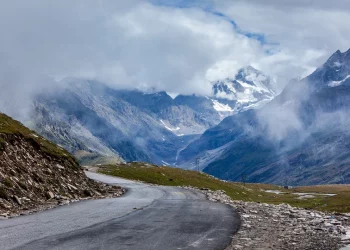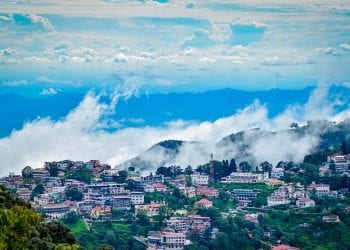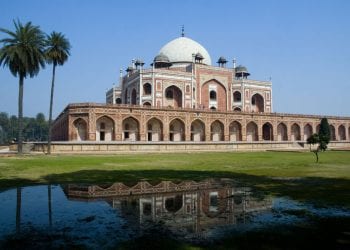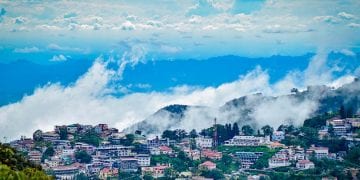Uncovering the Secret Gems of Tirthan Valley
The twin valleys of Tirthan and Banjar are offbeat destinations in Himachal Pradesh with something for every traveller! Relatively untouched by modernization, the valleys are somewhat of an open secret today. While they’re not entirely unknown, they (thankfully) still receive fewer tourists in comparison to Manali and Kasol. Getting to these magical valleys requires some effort, creating the ideal conditions to welcome offbeat travelers looking for solitude and quiet. Perched serenely in the lap of the Great Himalayan National Park, Tirthan Valley and Banjar are hidden treasures in Himachal Pradesh.
Landscape Hopping in Tirthan Valley and Banjar
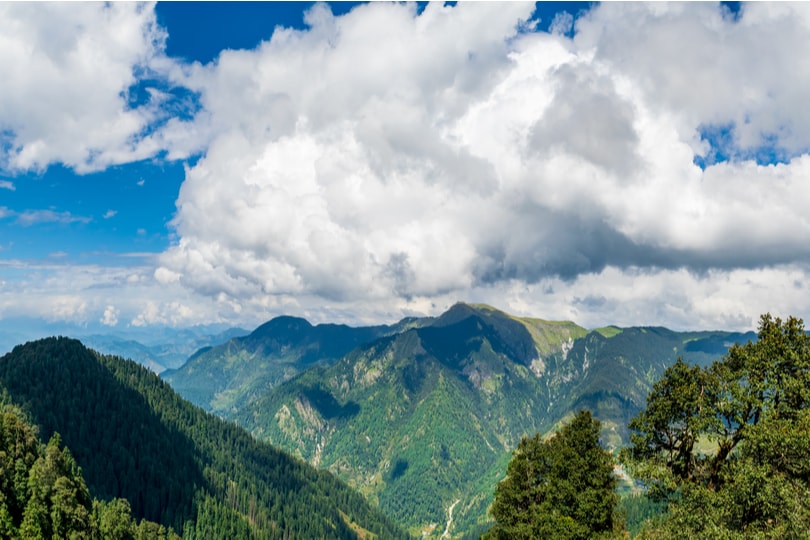
1. In the Arms of the Mountains
Lose yourself in the tranquil Tirthan valley as you take in majestic mountains, some of the prettiest alpine meadows, and magical coniferous forests. Those looking for some much-needed quiet time will feel right at home in Tirthan Valley. It is also one of the best birding destinations in all of Himachal Pradesh.
2. Hikes to Waterfalls

The best way to experience the mountains is always on foot. And if you’re willing to walk a few extra miles uphill, the twin valleys of Tirthan and Banjar wait to unveil some of their best-kept secrets to you. Short hikes from a village called Rolla, for instance, will bring you to a gorgeous waterfall almost entirely concealed in the valley.
Fancy a hike even higher up? Get a special permit from the Forest Department for the walk of a lifetime to Khorli Pohi in the south – home to the rare and beautiful Monal bird.
3. Scenic Villages
The beauty of Tirthan Valley lies not only in its beautiful vistas, but equally in the cheerful hearts of its people. Scattered across the valley are tiny hamlets and villages, each lovelier than the next! The way to these villages is your proverbial road less traveled – small roads that wind their way through beautiful woods and rice terrace farms. Spend a day or night with the residents whose lively stories will rejuvenate your weary soul. They might also demonstrate their famed wood-carving skills if you ask them nicely! These wood carvings are an integral feature of almost all the temples in Kullu Valley.
4. Crystal Rivers

Sit by the banks of the serene Tirthan River for some solitude and relaxation. The singing brooks will serenade all your worries away as you watch life quietly pass you by in the nearby villages. The Tirthan River makes its way through some of the most magical forests in the Western Himalayas before meeting the Beas River at Larji.
5. Angling
The possibility of catching some trout is one of the biggest attractions for most people traveling to Tirthan Valley and Banjar. The immense popularity of the sport, however, has led to overfishing in some stretches of the rivers. Anglers are advised to be mindful of this and choose to catch and release as a practice.
The Best Places to Visit in Tirthan Valley and Banjar
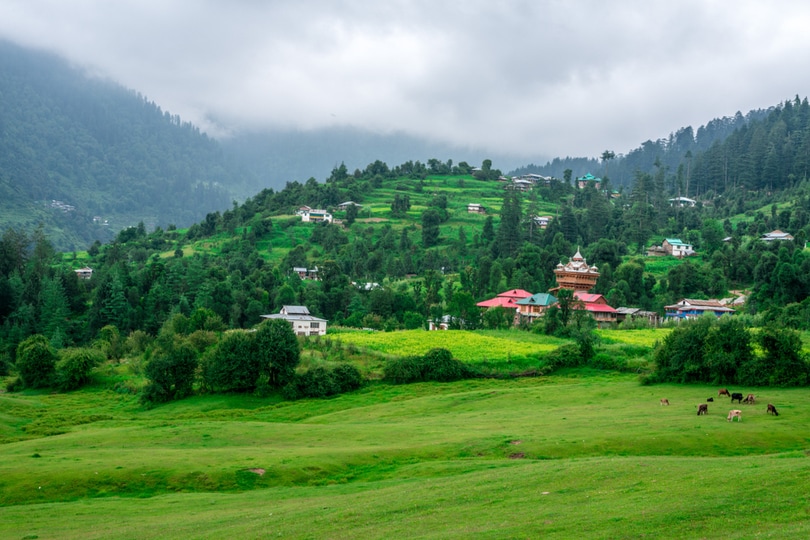
1. The Great Himalayan National Park
Enveloped by the Himalayan Mountains on all three sides, the Great Himalayan National Park is a paradise for nature-lovers and trekking enthusiasts. This stunning park – with its majestic oak and deodar trees – is home to more than 375 species of fauna, 31 species of mammals, and 181 species of birds. It officially received the status of a national park in 1999.
The park is located far away from prying eyes and busy feet. Its secluded location protects its fragile ecosystem. It has also created ideal conditions for the existence of distinct cultures in the villages dotted across the park. Each community worships a different deity and organizes colorful fairs during April, May, August, and September.
The park’s lush forests, lazy streams, and blooming flowers provide the perfect backdrop for some relaxation. The park also contains several well laid-out trekking trails. Trekkers can choose from options such as half-day, full-day, overnight or multiple day camping trips – depending on difficulty and fitness levels. The sights you will encounter on the way will be mesmerizing any which way.
2. Serloskar Lake and Raghupur Fort
Serloskar (also Serolsar) in Tirthan Valley is a picturesque lake that is an easy 6 km hike from Jalori Pass. Its crystal-clear waters surround an old temple of goddess Buddhi Nagin, who is highly revered by the locals. The hike takes you through beautiful trails surrounded by oak and cedar trees. The walk is an excellent way for the uninitiated to experience hiking and being outdoors at comfortable altitudes.
One can further add to the experience with another 3 km hike to the Raghupur Fort nearby. While the crumbling fort is now in a state of ruin, this only adds to its exceptional character. The fort is located amid a lovely meadow. Once at the fort, enjoy a beautiful 360-degree view of the valley stretching as far as the Dhauladhar ranges in the distance! The walk to Raghupur Fort takes you through a lovely forest and has spectacular views of the mountains.
Travelers can camp at this meadow in the summers. If you’re traveling in a large group, it is possible to hire tents, guides, and porters at Banjar, Jibhi, Sojha, or Jalori Pass. Serloskar Lake and Raghupur are easily accessible and do not require the services of a guide if you’re not staying overnight.
3. Gushaini
Gushaini is a village located on the banks of the pristine Tirthan River. It is the starting point for most treks in Tirthan Valley and fittingly so. Gushaini is a beautiful village whose residents are a cheerful and happy bunch! The hamlet is abundant in greenery, as well as peaches, pomegranate, apple, pear, and apricot orchards. The village comprises of rustic wooden buildings and houses. People go about their day and work diligently and happily. Children frolic and run around the tiny bylanes of the village. The confluence of Tirthan and Flachan river is a sight worth seeing and is quite close to Gushaini.
Gushaini is located 10 km before the entrance to the Great Himalayan National Park. It is the preferred place to stay for trekkers heading to the park. Besides trekking, visitors can try their hand at angling, river crossing, camping, bird watching, and camping. A short hike to Bandal Village will bring you to a beautiful temple of Goddess Durga. Gushaini – with its stunning natural beauty- is also the best place to unwind and do nothing.
4. Village Hikes
If you can’t get enough of the scenic walks in Tirthan Valley, make your way to the town of Sainj, which serves as the starting point for some village treks. A two-day trek to the villages of Shangarh and Lapah is a must-do! Both communities reside inside the area of the Great Himalayan National Park.
Shangarh contains a forest rest house and two prominent temples – the Sangchul Mahadev Temple and the pagoda-style Manu Rishi temple with its traditional architecture and intricate wood carvings. Lapah village lies at the base of the Dhel Meadow in the Great Himalayan National Park.
Trekkers can also visit local villages of Siund, Saran, and Ghat Seri. The hike to these villages is steep in some parts, but the long climb to the ancient villages of Saran and Peshi is worth all the effort. These villages still contain old houses and distinct architectural styles native to Himachal Pradesh.
5. Jibhi
It’s become increasingly difficult to find locations untouched by commercialization in Himachal Pradesh. But if you search hard enough, the state still guards some of its most beautiful areas. And we wouldn’t have it any other way! The enchanting village of Jibhi is one such place, tucked away in the lovely Banjar Valley. Jibhi will charm you with its freshwater lakes, pine forests, and quaint Victorian-style cottages!
Jibhi is a two-hour journey from the Aut tunnel on the Delhi-Manali Highway. It lies in Banjar Valley and is located at a distance of about 8-10 km from Banjar. Jibhi has numerous short hikes with the best mountain views! It’s also a perfect location to soak in traditional village life in Himachal Pradesh. Jibhi has a range of accommodation options ranging from cottages to huts to cheap homestays and guesthouses.
While in Jibhi, try and visit the charming Ghiyagi, which is a small hamlet located 4-5 km away on the way to Shoja. Pay close attention because Ghiyagi is so tiny, travelers can miss it entirely en route!
Where to Eat in and Around Tirthan and Banjar
We recommended that you eat at your hotel since there aren’t any stand-alone restaurants in Tirthan Valley and Banjar. A delicious, wholesome local meal at a homestay is a great way to satiate your taste buds and keep you going on those hikes around the valley.
Best Way to Reach Tirthan and Banjar

By Air: Bhuntar is the closest airport, but the flights are usually too erratic and expensive. A better option is flying to Delhi and taking the Himachal Tourism (HTPDC) overnight Volvo bus to Manali. The state-run bus services are reliable and comfortable compared to private operators. Get off at Aut, where pre-arranged taxis are readily available.
By Road: It is also possible to drive from Delhi to Tirthan Valley, although the journey is a long 550 km drive. Leave early in the morning and hit the Manali highway via Chandigarh.
If you have more time on hand, a drive to Tirthan Valley via Shimla would be a better option. The route is more relaxed and offers some of the most stunning views of beautiful cedar woods, the stunning Jalori pass, and charming villages like Shoja.
By Train: You can also take a train to Chandigarh and hire a taxi to the valleys. Alternatively, there’s also the toy train from Kalka to Shimla and a drive down from there.
P.s. You might like these related resources:
- Manikaran Sahib: A Complete Guide on your Himachal Pradesh trip!
- Find out the best Place to visit in Chail to make your holiday a great experience!
- Checkout the places near Dharamshala for your perfect weekend gataway!
Recent Posts
Top Picks
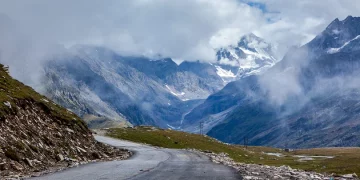
- OYO
 15 April, 2024
15 April, 2024 - Cultural Tour

- OYO
 15 April, 2024
15 April, 2024 - Cultural Tour

- OYO
 15 April, 2024
15 April, 2024 - Cultural Tour

- OYO
 15 April, 2024
15 April, 2024 - Cultural Tour

- OYO
 15 April, 2024
15 April, 2024 - Cultural Tour

Please rotate your device
Please go back to portrait mode for the best experience





 April 15, 2024
April 15, 2024 